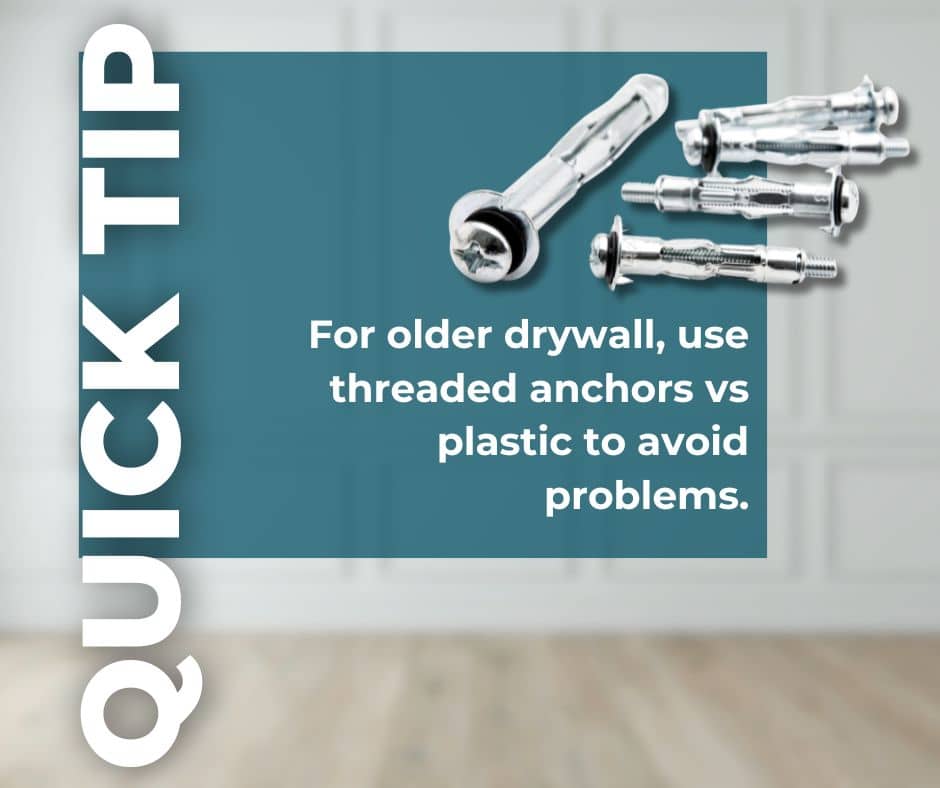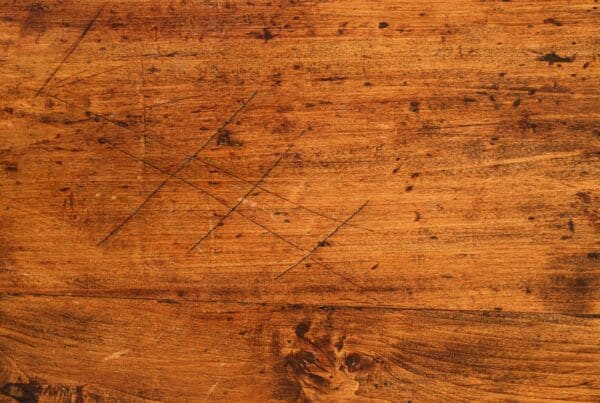
Drywall is in nearly every home, but most people don’t think about its limits until they try to hang something on it. Whether you’re mounting a TV, putting up shelves, or adding a heavy mirror, it’s important to know how much weight your wall can really handle.
If you misjudge the load, you could end up with broken items, a damaged wall, or even injury. This guide breaks down what drywall can support, how to hang heavier items safely, and when it’s smart to get professional guidance before you drill.
What Drywall Is Made Of
Drywall, sometimes called sheetrock or gypsum board, is made from a layer of compressed gypsum covered in paper.
It’s lightweight, easy to work with, and perfect for finishing walls and ceilings. But it isn’t designed to carry a lot of weight on its own.
The strength of drywall depends on several factors:
- The thickness of the panel (most homes use 1/2-inch)
- Whether the weight is supported by an anchor or stud
- How the item is mounted
- The condition of the drywall (age, moisture, or damage)
If you try to hang something heavy with a nail in plain drywall, you’re likely to tear the paper surface or crack the board.

How Much Weight Can Drywall Hold?
Standard drywall can typically hold about 5 to 10 pounds with a basic nail or screw, but that’s about the limit without support. Heavier loads need better hardware and solid backing.
Here’s a quick comparison:
| Mounting Method | Estimated Weight Limit |
| Nail or screw (no anchor) | 5–10 pounds |
| Plastic drywall anchor | 10–25 pounds |
| Toggle or molly bolts | 25–50 pounds |
| Mounted into a stud | 80–100+ pounds |
Keep in mind that over time, weight can pull anchors loose if the load shifts or the drywall is compromised by moisture.
What Happens If You Overload Drywall?
When you exceed the wall’s weight limit, the consequences aren’t always immediate. The drywall may crack slowly, the anchor may loosen, or the item might pull away from the wall without warning.
Some common outcomes include:
- Cracked drywall or torn paper facing
- Items falling and breaking
- Injuries from falling objects
- Damage to internal wiring or plumbing if anchors are pulled too deep
- Hidden stress that weakens the wall over time
According to the U.S. Consumer Product Safety Commission, more than 18,000 people are injured each year due to TVs or furniture tipping or falling from improperly mounted supports.
How to Hang Heavy Items Safely
1. Locate a Stud
Studs are the vertical wooden supports behind your drywall. Use a stud finder to locate them, then mark the edges. Studs are usually spaced 16 inches apart and provide the most secure surface for mounting.
2. Choose the Right Hardware
Use wall anchors rated for the weight of the item if no stud is available. Toggle bolts and molly bolts are better than plastic anchors for heavier loads. For maximum security, mount into a stud with wood or lag screws.
3. Spread Out the Weight
If you’re hanging something wide, like a long shelf or cabinet, try to anchor it into more than one stud. This helps distribute the weight and reduce strain on the wall.
4. Consider Drywall Condition
If your walls have water damage, old repairs, or visible cracks, it may not be safe to hang anything heavy. Damaged drywall loses strength and can fail even under moderate weight.
5. Follow Manufacturer Guidelines
Always check the instructions for wall mounts, brackets, or shelving systems. Many products specify how they must be anchored and whether stud installation is required.

Related Questions and Answers
Can I hang a TV without hitting a stud?
Technically yes, using heavy-duty anchors. But most experts recommend anchoring into at least one stud for stability. TV mounts carry a lot of weight, and the last thing you want is the mount pulling out of the wall.
What if my studs aren’t in the right place?
You can use a mounting plate or cleat system. These distribute weight across multiple points, letting you attach the item where you want without relying on one anchor.
Is it safe to hang shelves on drywall?
If they’re light and decorative, yes. But if you’re storing books, dishes, or other heavy items, anchoring into studs is the safer choice.
Does ceiling drywall hold the same amount as wall drywall?
No. Ceiling drywall is under more stress from gravity. You should always anchor into ceiling joists, especially for heavy lighting, fans, or hanging storage.
When to Call a Professional
If you’re unsure what’s behind your walls, dealing with older drywall, or planning a major installation, it’s smart to consult a professional.
Alpha Building Inspections provides thorough inspections throughout New Hampshire, Maine, and Massachusetts. During a full home inspection, we evaluate the condition of walls, framing, and any visible structural concerns that could affect mounting or safety.
If you’re renovating, adding custom storage, or considering a wall-mounted upgrade, we can help you spot risks before they turn into repairs. Knowing whether your walls can handle the load is just one part of protecting your home long term.
Conclusion
Drywall is more delicate than it looks. While it can hold lightweight items with no issue, heavier loads require the right support. The key is knowing how much your wall can handle and choosing the right method for hanging.
If you’re planning a project or want to make sure your home’s walls are solid, schedule a home inspection with Alpha Building Inspections. Our team will give you the insight you need to mount smart and build with confidence.



